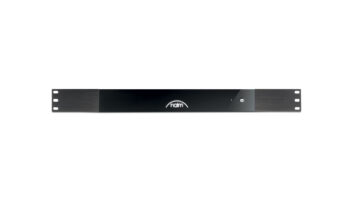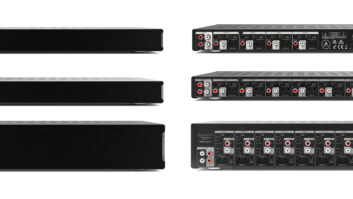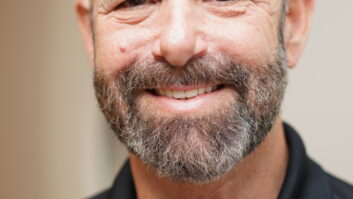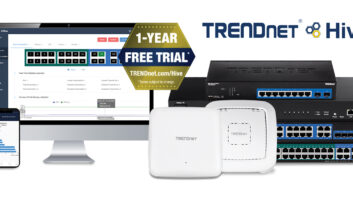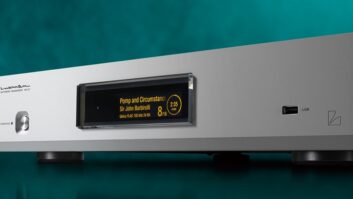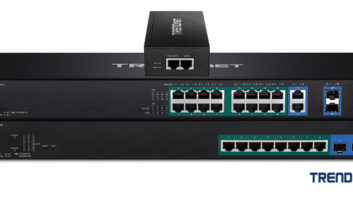
Frank DeFilippis, product lead for channel programs at DISH and Vivek Khemka, Deish senior VP of product management, during CEDIA EXPO 2014 During International CES last month, Dish Network made headlines with news of its first 4K Ultra HD programming plans and an “over-thetop” (OTT) streaming service targeting so-called cord cutters. But somewhat under the radar, former custom integrator Frank DeFilippis continued his mission toward developing a more streamlined and profitable custom integration channel program for the satellite TV service.
When he was a custom integrator in Atlanta, DeFilippis was often frustrated by his company’s lack of profitability when working with pay TV services on behalf of clients. DeFilippis said that most of his CI clients didn’t want to “cut the cord,” and the majority wanted whole-house functionality and full integration of their pay TV services. Through the years, he tried every pay TV option, and none offered the profit opportunity of other integrated sub-systems.
DeFilippis eventually developed a direct relationship with Dish and late last year was hired at the Englewood, Colorado, headquarters. His eloquently expressed frustration with pay TV’s traditional relationship with the CI channel has thus far been met with promises of support from decision makers within company, and he hopes his new program will start by correcting two basic problems: poor whole-house systems integration with set-top boxes and a weak business model for CIs working with Dish.
DeFilippis noted that pay TV companies have historically supplied OEM STB equipment that is unpredictable and inconsistent from one job to the next. “This almost eliminates the chances for an RS-232 or IP driver, so CIs are left with infrared for control integration,” he explained. “IR is fine, yet many STBs utilize toggle bit power commands, which inevitably leads to out of sync AV setups, service requests, and credibility erosion for the CI channel. Some CableCARD-based DVRs and DirecTV support better integration, but still have business model issues for installers.”
DeFilippis also noted that a CI’s reputation is too often compromised when working with clients that ask them to help with pay TV service start-up and maintenance.
“Accountability and usability for complex systems is really what [CIs] offer, so where’s the value-add when we ask our customer to call the cable company to order CableCARDS needed for integrated DVRs?” he asked.
DeFilippis believes that those are logistics and details that the CI should absorb without involving the customer. Then, despite being accountable for the performance of the integration, the CI makes $0 for the activation and supervision of the install.
“CIs use their influence and sometimes suggest satellite TV,” he said. “Now the CI can integrate with predictable hardware, control the install schedule, and get paid for the activation.”
All is good, except that CIs typically aren’t viewed as good (high-volume) accounts by satellite TV sales teams despite the high quality of their clients. This translates into little attention from sales reps and support resources and ultimately termination letters due to low activation volume.
Most immediately DeFilippis is looking to end the practice of terminating lower volume CIs from the Dish system. Simultaneously, he is working with CI control systems manufacturers to develop two-way drivers to will eliminate the need for IR emitters and to enable program guide metadata to show up on control apps. Other CI program plans also are underway, including a beta test program with integrators in Florida in February 2015.
Custom integrators can sign up for updates to this program at www.dish.com/cedia.
DISH Goes 4K, Adds Streaming

Joseph Clayton Dish president and CEO, at CES DISH received the most attention at CES for its OTT streaming service, known as Sling TV, which will be optimized for mostly younger audiences that for a variety of reasons have rejected traditional subscription-based multi-channel TV service. Live channels include top Disney/ABC/ESPN channels, in addition to TNT, Food Network, HGTV, TBS, and Cartoon Network. In addition, the service, which charges $20 a month, will mix in “some of the best internet-delivered content,” according to Sling TV CEO Roger Lynch.
DISH also announced that it will supply 4K UHD programming through a new 4K Joey box for 4K UHD TVs with HDMI 2.0 and HDCP 2.2 ports.
The 4K Joey, which will carry a comparable cost to existing Joey devices, is slimmer than current Joey boxes, so it can be placed on a console or mounted on a wall. The box supports HEVC and 4K playback at up to 60 fps and offers full 10-bit color resolution. A dual-core ARM processor speeds up device operation, Bluetooth audio playback links to wireless headphones and a picture-inpicture function is added.
Dish will transmit 4K VOD content, encoded in HEVC and automatically cached to a connected Hopper.

